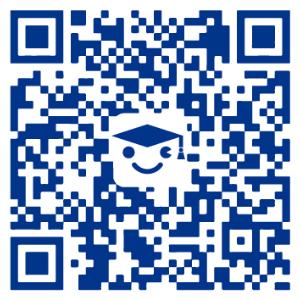行业资讯
相关资讯
更多>>- 湖南专升本答疑:数控技术专业可以专升本吗
- 动物医学专升本考什么?湖南考生备考指南
- 湖南专升本:机电一体化专业院校报考指南
- 商务英语专业专升本,你能pick哪些专业
- 湖南专升本科学择校指南:从自我评估到精准
- 想了解湖南专升本可以跨专业报考吗?来看专
- 2026湖南专升本上岸,是你考研的新起点
- 专升本备考注意!面对2025湖南专升本停
- 湖南统招专升本,你知道自己有几次机会吗?
- 突围与平衡:如何破解湖南专升本与实习的时
- 统招专升本对比普通本科,究竟有什么区别?
- 备考第一步!弄清湖南专升本考试科目,精准
- 湖南专升本备考:大一、大二、大三各阶段备
- 想赢在起跑线?详解湖南专升本最佳备考周期
- 建议收藏!湖南专升本备考指南之英语到底难
- 告别恐惧!湖南专升本备考指南之高等数学
- 请收藏!湖南专升本各阶段核心任务详解
- 别错过!湖南专升本报名全流程与时间节点图
2022年河北专接本临考实战英语模拟试卷四
2022年河北专接本临考实战英语模拟试卷四

Ⅰ.Phonetics (5points)
Directions: In each of the following groups of words, there are four underlined letters or letter combinations marked A, B, C and D. Compare the underlined parts and identify the one that is different from the others in pronunciation. Then mark the corresponding letter on the Answer Sheet with a single line through the centre.
1. A. host
B. crop
C. doctor
D. lost
2. A. knock
B. keep
C. key
D. kitchen
3. A. laugh
B. rough
C. daughter
D. tough
4. A. safety
B. lucky
C. windy
D. supply
5. A. father
B. anything
C. method
D. think
Ⅱ.Situational Dialogues (10 points)
Directions: In this section there is a long dialogue with 5 missing sentences. At the end of the dialogue, there is a list of given choices. You are required to select the ONE that best fits into the dialogue. Then mark the corresponding letter on the Answer Sheet with a single line through the center. Note that there are three additional choices and you may not use any of the choices in the list more than once.
A: Good morning.
B: Good morning. Sit down please. 6
A: I’ve got a headache and a bad cough.
B:7
A: For two days.
B: What did you have for breakfast this morning?
A:8
B: Now open your mouth, please. I want to take your temperature. Oh, don’t worry. It’s nothing serious. Just a little cold.
A: What shall I do?
B:9.
A:10
B: Twice a day. You’d better drink more water and stay in bed. You’ll be all right soon.
A: Thank you very much.
A. You must take some medicine, and have a good rest.
B. What’s wrong with you?
C. I don’t agree with you.
D. Just a glass of milk.
E. How long have you like this?
F. How shall I take the medicine?
G. See you tomorrow.
III. Reading Comprehension (50 points)
Section A (30 points)
Directions: There are 2 passages in this part. Each passage is followed by some questions or unfinished statements. For each of them there are 4 choices marked A, B, C and D. You are required to choose the ONE that best fits into the statement. Mark the corresponding letter on the Answer Sheet with a single line through the centre.
Passage 1
Questions 11-15 are based on the following passage.
There are some steps you can take yourself to avoid catching a cold.
Contrary to popular belief, colds are not caused by exposure to severe weather. Colds are caused by viruses harboured in the body, and you’re better off out on the ski slopes or even waiting for the bus in a snowy day than you are in a toasty warm room, surrounded by friends, co-workers, or fellow students, who just may be passing the virus around. If you feel a chill when you’re coming down with a cold, you’re already sick. A chill is an early symptom: It’s the cold that caused the chill, not the other way around.
While the virus can spread through droplets propelled into the air when a cold-sufferer coughs or sneezes, surprisingly, this is not the most common route of transmission.
Numerous studies have now shown that the overwhelming majority of colds are “caught” by hand contact. A cold-sufferer rubs her nose, thereby transferring the virus to her hand. Then a friend comes to visit. “Don’t kiss me,” she cautions, so the friend steps back and presses her hand. The friend then wipes her own nose or eye-and several days later is stricken with a cold. Or parents pick up their child’s abandoned tissues and carefully throw them away, but fail to wash their hands afterward.
Cold viruses also can be transferred to objects-telephones, towels, plates-and remain infectious for up to three hours.Frequent hand-washing-on the part of the cold-sufferer as well as other members of the household-will minimize the spread of viruses in this way.
11. Which of the following steps you take will most probably cause you to catch a cold?
A. To stay in a toasty warm room with a lot of people.
B. To expose yourself to severe weather.
C. To be on the ski slopes.
D. To wait for the bus on a snowy day.
12. Which of the following is not true?
A. People usually believe that colds are caused by exposure to severe weather.
B. Viruses can only spread through air.
C. Colds are caused by viruses hidden in the body.
D. Most colds are “caught” by hand contact.
13. To prevent viruses from spreading, we should ____.
A. shake hands with our friends instead of kissing them
B. never touch the telephones, towels or plates.
C. often wash our hands
D. often rub our noses and eyes
14. A man is most likely to be stricken with a cold if ____.
A. few viruses are harbored in his body
B. the infectious viruses have been exposed to the air for more than 3 hours
C. he visits his friend in a warm room.
D. he shakes the hand of a cold-sufferer
15. The best title for this passage might be ____.
A. Colds and Viruses
B. Ways to Avoid Colds
C. The Spread of Viruses
D. Hand Contact and Transmission of Viruses.
Passage 2
Questions 16-20are based on the following passage.
There are a couple of things to know about the use of humor in a speech. One thing is to distinguish healthy and unhealthy humor. Unhealthy humor usually has a victim. It is based on differences. Healthy humor is taken from our everyday experiences and is based on the things people have in common. Therefore it unites them.
Another thing is that when sharing humor with the audience a speaker has to take into account what part of the day it is. The “morning” audience can be tough, because everyone is just getting into work; the “lunch” audience is better, but the best time for sharing humor is dinner-time, because people relax after their working day and are more likely to feel the speaker.
There are certain rules that are strongly advised to be followed. The primary rule is not to offend anybody by a joke. The jokes are not supposed to relate to the audience but to the speaker himself. When a speaker shares his personal stories he will be better accepted by the audience. He can kid about his fame, problems, image, etc.
However, he does not have to belittle himself or sacrifice his reputation for a laugh. Besides, the jokes and humorous stories that are used by the speaker have to relate directly to the topic of his speech. The speaker is supposed to speak clearly and keep from laughing at his own story or joke while telling it, so that he can make it clear and to the point. Finally, once a joke is said it may not be repeated once more. So the speaker must not repeat a joke that fails or one that works.
And, remember these tips always work: personal jokes, short remarks that go well with the speech, good choice of vivid words and appropriate body gestures.
16. Healthy humor differs from unhealthy humor in that it is_______
A. intended to enrich one’s experiences
B. linked to the things that people share
C. used most frequently to unite victims
D. based mostly on the differences in life
17. The writer thinks that a joke works best with an audience who is_______
A. relaxed
B. tough
C. hungry
D. busy
18. To connect closely with the audience, the speaker is advised to________
A. repeat a good joke
B. joke about himself
C. laugh at his stories
D. improve his image
19. According to paragraph 3, a joke should support________
A. the nature of an issue
B. the fame of a speaker
C. the taste of an audience
D. the subject of a speech
20. One of the tips the writer gives for a successful speech is_______
A. dramatic gestures
B. proper eye contact
C. vivid expressions
D. good time control
Section B (20 points)
Directions: In this section there is a passage with ten blanks. You are required to select one word for each blank from a list of choices given in a word bank following the passage. Read the passage through carefully before making your choices. Each choice in the bank is identified by a letter. Please mark the corresponding letter on the Answer Sheet with a single line through the centre. You may not use any of the words in the bank more than once.
Reading is the key to school success and, like any skill, it needs 21 . A child learns to walk by practicing until he no longer has to think about how to put one foot in front of the other. An excellent sportsman practices until he can play quickly, correctly and without 22 . Educators call it “automaticity (自动性)”.
A child learns to read by sounding out the letters. With practice, he speaks with fewer and fewer pauses and 23 , reading by the phrase (短语). With automaticity, he doesn’t have to think about the meaning of words, so he can 24 on the meaning of the text.
It can begin as early as first grade. In a recent study of children in Illinois schools, Alan Rossman of Northwestern University found automatic readers in the first grade not only read almost three times as 25 as the others, but also got better results in exams. “It is not his IQ, but the amount of time a child spends on 26 that is the key to automaticity”,
According to Rossman, Any child who spends at least 3.5 to 4 hours a week reading books, 27 or newspapers will probably reach automaticity. You can test your child by giving him a paragraph but appropriate to his age to 28 aloud. If he reads aloud with expression, with a sense of the meaning of the sentences, he probably is an 29 reader. If he reads brokenly, one word at a time, without 30 or meaning, he needs more practice.

IV. Cloze (20 points)
Directions: There are 10 blanks in the following passage. For each blank there are 4 choices marked A, B, C and D. You are required to choose the ONE that best fits into the passage. Then mark the corresponding letter on the Answer Sheet with a single line through the centre.
Japan is a small country with few natural resources. 31 this, Japanese productivity, the rate at which goods are produced, 32 more than eleven times in the past thirty years. Many people in the West wonder how the Japanese do it. The key 33 Japan’s success can be discovered by looking at some basic differences between Japanese and Western attitudes towards works.
People in the west generally view work 34 a necessary evil—one must give up part of one’s freedom to earn the money needed to live. To the Japanese, however, work is the central interest of one’s life; it’s 35 that a Japanese establishes his identity.
A Japanese business firm is like a family. When an employee joins a company, he expects to work for that company for the rest of his working life; 36 is anyone dismissed. Promotion is based on the seniority system(年资制度), the length of employment 37 one’s rank in the company. Those at the bottom do not 38 chances for promotion because those at the top retire at a certain age 39 others may have their turn. In addition, the difference between the lowest and the highest salaries is much less than 40 in the West.
31. A. Because of
B. As for
C. Although
D. Despite
32. A. have increased
B. has increased
C. are increasing
D. is increasing
33. A. to
B. of
C. for
D. in
34. A. like
B. for
C. about
D. as
35. A. this
B. that
C. here
D. where
36. A. fairly
B. rarely
C. occasionally
D. frequently
37. A. determines
B. has determined
C. determining
D. to determine
38. A. care about
B. care for
C. worry about
D. concern with
39. A. in that
B. such that
C. for that
D. so that
40. A. that
B. those
C. one
D. ones
V. Writing (15 points)
Directions: In this part you are required to write a composition entitled The Benefits and Dangers of Dieting in no less than 120 words according to the following Chinese outline. Please remember to write it on the Composition.
1.现在有很多人为“爱美”而节食。
2.节食给健康带来的好处。
3.这种节食可能带来的问题。
以上就是关于2022年河北专接本临考实战英语模拟试卷四的全部内容了,如果你还有专升本相关的疑惑(如专升本报名、考试动态、院校招生简章、统考动态、湖南专升本院校、历年真题、考试大纲、专升本等相关信息),可以在文章下方留下你的联系方式,老师会第一时间联系到你,为你答疑解惑哦!

部分内容来源于网络转载、学生投稿,如有侵权或对本站有任何意见、建议或者投诉,请联系邮箱(1296178999@qq.com)反馈。 未经本站授权,不得转载、摘编、复制或者建立镜像, 如有违反,本站将追究法律责任!
本文标签: 统招专升本全日制专升本统招 上一篇:2022年河北专接本临考实战英语模拟试卷三 下一篇:2022年河北专接本临考实战英语模拟试卷五





